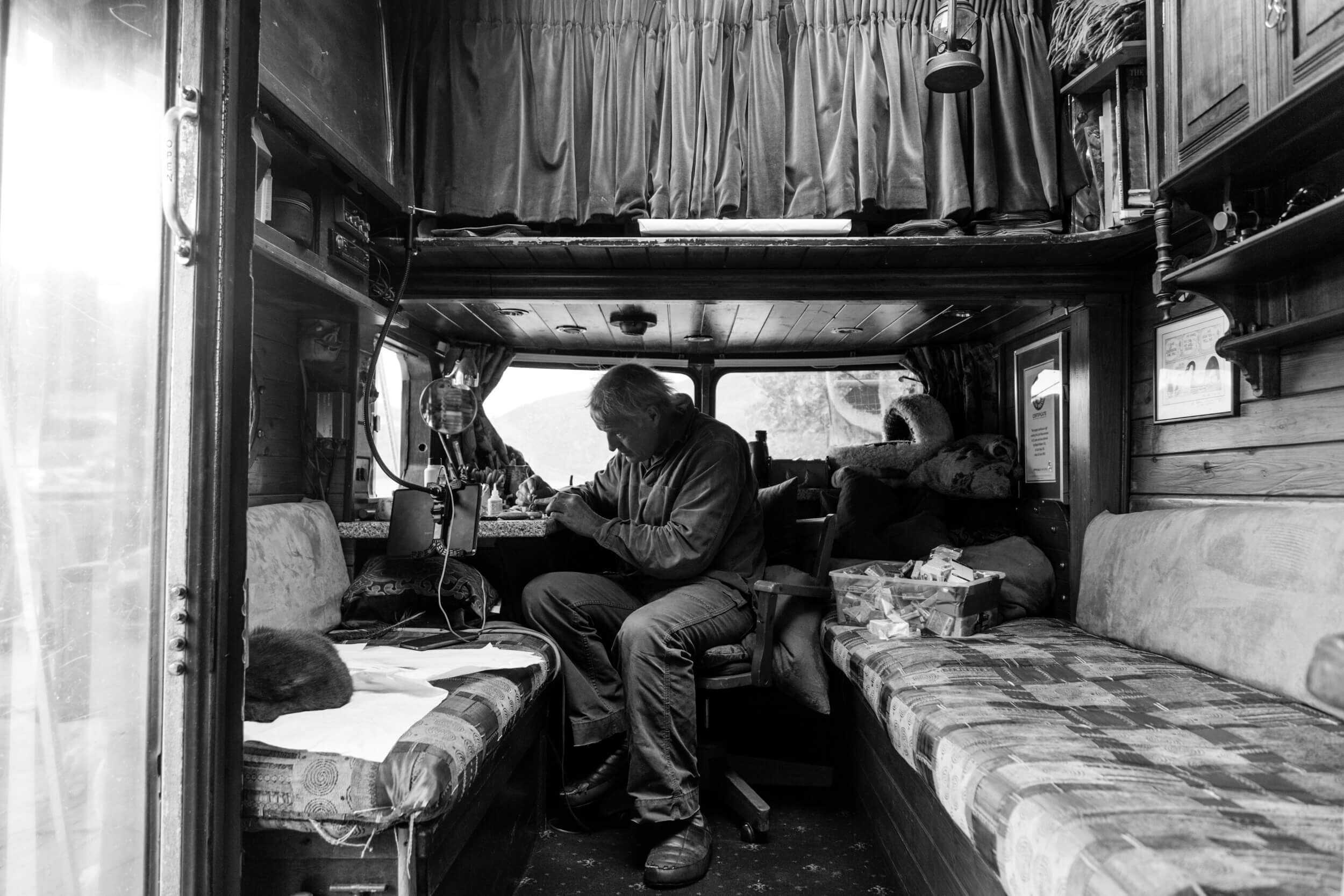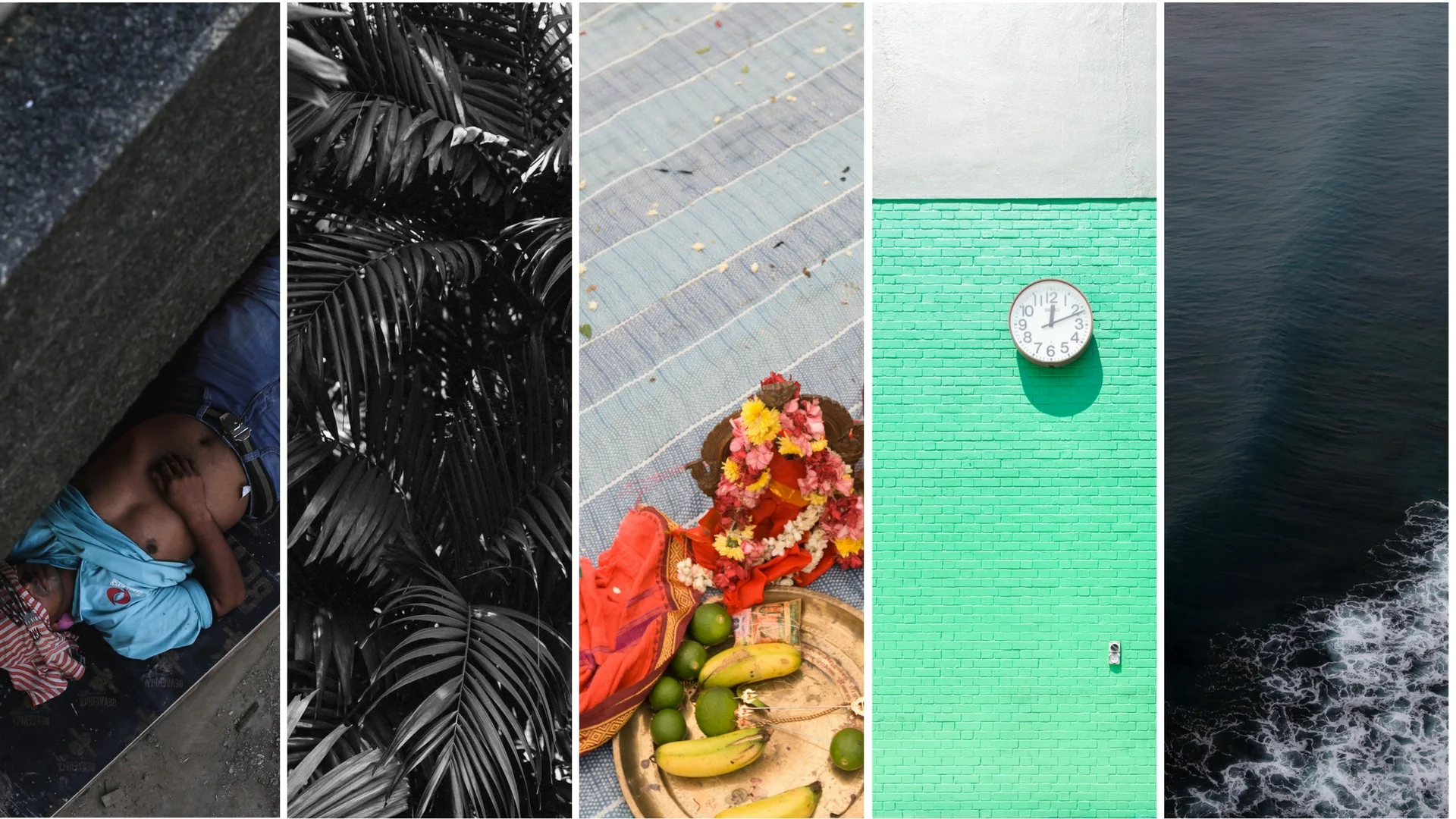THE LOCH NESS HUNTER
FEATURE Nº16
WE MET THE MAN WHO HAS BEEN SEARCHING FOR SCOTLAND'S MYTHOLOGICAL MONSTER FOR 26 YEARS
Words by Fraser Morton
Photography by Eszter Papp
In 1991 Englishman Steve Feltham sold his house and all his possessions to embark on a quest to unravel the mystery of the Loch Ness Monster. He expected to be gone for two years. Twenty-six years later and he’s still searching.
“I’ve been here a long time, but this is my chance to solve one of the greatest mysteries ever,” Steve said, leaning on the door of his caravan at the North end of Loch Ness.
Steve, 54, holds the Guinness World Record for the longest continuous search for the Loch Ness Monster and has been named a tourism ambassador for the region. He’s a tourism draw in his own right.
The mystery of Loch Ness has drawn people from around world for the past 90 years – but Steve is the only person to dedicate his life to unravelling the truth.
He says his quest is not to prove the existence of a monster, but to find out the source of the alleged sightings.
Steve Feltham outside his caravan at the north end of Loch Ness.
The Legend
The first record of Nessie can be traced to Irish monk St Columba, who allegedly banished a beast to the River Ness in the sixth century.
It was 1933, following the opening of a new road that lined the loch, when the first sighting was reported by a couple who claimed to see an enormous dragon-like creature crossing the road with an animal in its mouth. The Inverness Courier published the story, which received widespread international media attention and the coining of the name the “Loch Ness Monster”. Two more sightings were reported shortly after. Hugh Gray while walking his dog took a blurry photo of what he claimed was the monster, followed by motorcyclist Arthur Grant, who reported that he almost hit a creature resembling an enormous seal with a small head and long neck on a moonlit night. He said the creature darted across the road and slipped into the loch.
Shortly after, the Daily Mail newspaper sent renowned tracker Marmaduke Wetherell to Loch Ness. He reported back what he found: Large footprints in the mud on the shores of the loch.
However, it turned out there was a popular trend among affluent travelers of the day. To make picnic tables made from elephant feet. The tracks turned out to be the prints of the grisly picnic tables.
Humiliated, he hatched a plan to regain his reputation. He would make a fake monster. He enlisted the help of his son-in-law Christian Spurling, a model maker, Maurice Chambers, an insurance agent and his son Ian Wetherell, who would buy the materials needed for the hoax. A small toy submarine onto which they affixed a neck and head of a monster and then motored it out onto the loch. Ian Wetherell then snapped a few frames, but as they heard the water bailiff approach they sank the toy submarine, where allegedly it remains to this day at the bottom of the loch.
Chambers then gave the photo plates to Robert Kenneth Wilson, a friend and gynecologist from London who loved a good practical joke. He developed them in Inverness and sold the photos to the Daily Mail who ran the headline on the front page: Surgeon’s Photo Of The Monster. Some 60 years later the photo was proved to be a hoax.
Despite the scandal, alleged sightings continued from the 1930s to present day.
There have been numerous efforts to find Nessie, with absurd and professional expeditions onto the loch by boat and via airplane.
The most notable was in 2003 when the BBC funded an extensive scientific mapping of the loch with 600 sonar beams. The study concluded there was “probably nothing there”.
Steve's Story
It was 1970 when Steve was seven years old and a family trip to Loch Ness that planted the seed for his obsession.
At the time there was a Loch Ness Investigation Bureau, and Steve said he was captivated by the “grown men with huge cameras searching for a monster”.
His father bought him a book on the history of sightings and from then on young Steve was hooked. All through his adolescence and into adulthood he came back on week-long expeditions armed with basic cameras.
He worked as a potter, a bookbinder and then a graphic artist, but the loch kept calling him back.
So on June 19, 1991 after ending a relationship, selling his house and loading his possessions into a former mobile library van, Steve headed for Scotland and to the shores of Loch Ness.
Soon after, the BBC caught wind of his ambitious plan and thought it worthy of a story. They kitted out Steve with all the camera equipment and tape he would need to document the loch for an entire year.
The program Desperately Seeking Nessie aired in 1992 and was a hit. Tourists began arriving in droves to knock on Steve’s van door. Word was out, there was a real Nessie Hunter on the case.
It was in this first year when he made his only sighting.
“It was like a torpedo moving through the water, like a white streak of water. Almost like a water skier,” he said. “To this day I can’t explain what that was.”
Steve says the most compelling sighting happened in 2012.
That was when local tourist boat skipper Marcus Atkinson recorded a sonar image of an alleged five-meter wide object at a depth of 75 feet directly underneath his vessel.
“He had just dropped off tourists at Urquhart Castle at the edge of the loch and was idling in the bay when he saw the object on his sonar.”
The sonar image was sent to the press and made national headlines. It showed a grainy large mass of something at about 75 deep and five feet wide under the skipper’s boat.
At 23-miles long the loch was too big for one man to cover, and Steve could only search about a mile of water from each vantage point he visited.
He tried other methods of hunting. He used a boat fitted with echo sounders and even took to the skies in his friend’s micro-lite.
For most of the first decade, Steve’s van was mobile and he changed vantage points, but after his van failed an MOT, he decided to hold up in the peaceful village of Dores at the north end of the loch.
The owner of the Dores Inn – the local pub -allowed Steve to build a small wood decking on the beach and even hook up his van to their electricity. He made himself at home. To earn money he started making little Nessie models from clay to sell to tourists.
Despite his remote lifestyle, Steve says he’s never lonely. He’s met people from all around the world. A Chinese travelling circus arrived one day, and on another occasion comedian Billy Connolly knocked on his door to ask Steve to be his personal guide for him and his pals.
In 2015, Steve was interviewed by a freelance journalist and mentioned that one possible source of the sightings could be a very old Wels Catfish, which could grow to 13 feet and 62 stone.
He said, “It is known they were introduced into lakes in the UK in the Victorian period for sport fishing".
The story went viral and within a day Steve’s catfish theory had made its way around the world.
“There are many different theories. Some people believe the catfish story. Others think there’s a spaceship on the bottom of the loch and the popular one is that Nessie is a lost dinosaur. None have been proved, and that’s what I’m trying to get to the bottom of.”
Steve makes money selling clay Nessie models.
It’s not just the mystery that keeps Steve on the banks of Loch Ness.
“There’s a palpable energy around this loch. At night is when I like it best. I go out and stand on the beach looking out over the water. It’s a magical place, especially when the stars are all out."
Steve has claimed the mantle as the official Nessie Hunter of the area. So on the rare occasions when sightings do happen, they go to Steve. He helps publish the photos, and in most cases is able to identify the objects: tyres, small boats, tides and other normal explanations.
Today, Steve says the type of traveller coming to the loch has changed.
“People come these days and take a photo of themselves and then leave pretty quick. They seem more concerned with themselves than appreciating the beauty here.”
“There used to be a lot of independent travellers who come and camp. We get a lot of bus tours now...changed days.”
Ask Steve why he’s stayed so long and he smiles.
“Well, it’s an adventure isn’t it. It’s out of the ordinary. If that little seven year old boy could see me now, he wouldn’t believe his luck.”





































